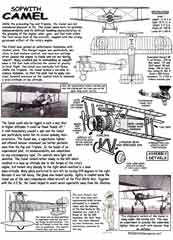


Sopwith Camel Collection - $$15.95
The agile little WWI British Sopwith Camel played a major role in the skies over France. The compact and lightweight Camel was the most prolific of Sopwith's wartime fighters. Introduced on the Western Front in 1917, the Camel F.1 helped establish aerial superiority over German fighters, 12 version as of 9/09
The Legendary WWI Sopwith Camel Collection WWI Scout
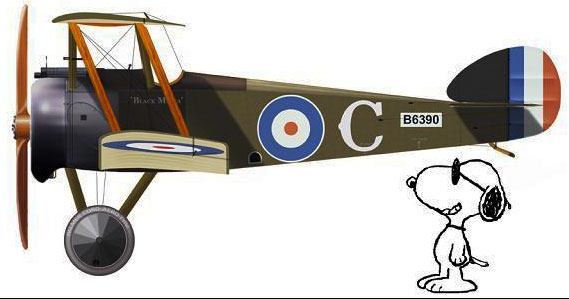
The Sopwith Camel was either loved or detested: no pilot who flew the stocky little fighter could afford to treat it with indifference.In terms of aircraft destroyed, the Sopwith Camel was the best fighter of WWI; 5,490 were built in all. The Camel grew out of the Sopwith Pup, a little fighter introduced in 1916, but which was soon outclassed by the German Albatroses and Halberstadts. Sopwith's chief designer, Herbert Smith, began work on the Pup's successor in late 1916, and by December, the prototype "F.1" was ready to fly.
This webpage is for the Sopwith Camel Collection which has 12 different versions as of March, 2010
Click HERE to get to the Sopwith Camel single model offer
(the pages will be similar)
Sopwith Camel
As the successor to the Pup, the Sopwith Aviation Company produced a fiery, temperamental little biplane, the famous, and notorious Sopwith F.1 Camel.
The prototype F.1 had the 110 h.p. Clerget rotary engine: the first production machines. however, had the 130 h.p. Clerget. Many F.1s were powered with the 110 h.p. Le Rhone. the 150 h.p. BRI. or the 100 h.p. Monosoupape. The fabric-covered wings had wire-braced wooden spars and ribs and steel-tube wing-tips and trailing-edges: the lower wing only had dihedral. The center section was wide, so that the center-section struts were splayed outwards. To improve the pilot's view there was a skylight in the top wing. Tail, rudder and fin were outlined in steel tubing.
The fuselage was a wire-braced wooden box girder; apart from
aluminum panels behind the cowling and plywood cockpit sides
and top decking, the covering was of fabric. The undercarriage
was of the split-axle type: the steel-tube vees were relatively
short, the wheels relatively large.It
was the first British type to carry twin Vickers guns; their breeches
were enclosed in a 'hump', which gave the Camel its name.
In the hands of an experienced pilot the Camel could outmaneuver
any contemporary airplane, with the possible exception of the
Fokker Triplane. From July 1917. when it reached the Front, until
the Armistice, the Camel accounted for no less than 1,294 enemy
machines.To the beginner the Camel too often displayed the unpleasant
side of its character. Its amazing agility was partly due to the
torque effect of its rotary engine: on right-hand turns the nose
tended to drop: on left-hand turns to rise. A tight turn, uncorrected,
was liable to finish in a fatal spin.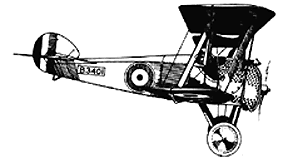 The Clerget rotary would choke if the mixture were not weakened
just after take-off: the machine would then stall and spin into
the ground. The casualty rate among Camel pupils was very high.
The Clerget rotary would choke if the mixture were not weakened
just after take-off: the machine would then stall and spin into
the ground. The casualty rate among Camel pupils was very high.
Units using night-flying Camels found that the flashes from the twin Vickers guns blinded their pilots. A special version was therefore devised: the pilot sat farther aft. Twin Lewis guns on a double Foster mounting were fitted above the center section. These could be pulled down to reload or to fire upwards. The cockpit had a faired headrest; there was a large center-section cut-out, and occasionally cut-outs in the lower wing-roots.
The Sopwith 2F.1 Camel was designed for use on ships: it had a shorter wing.span and the rear fuselage could be detached. The main distinguishing points were the thin steel-tube center-section struts, the external rocking levers on the fuselage, and the armament-one Vickers' gun on the port side of the cowling and a Lewis gun above the center section. These Camels operated successfully from both aircraft carriers and lighters towed by destroyers.
And here's some more detailed information about
the Camel..........
The Camel, designed by Herbert Smith to succeed the Sopwith
Pup and triplane, had none of the docile handling qualities of
its predecessors, and had to be mastered before it could be flown
successfully, but Camels were credited with destroying more enemy
aircraft than any other Allied type. Aided by engine torque, the
Camel could out-turn any German fighter, except possibly the Fokker
Dr. 1. Its name was originally unofficial, derived from the humped
appearance created by the fairing over the Vickers gun breeches.
The prototype appeared in December 1916, powered by a 110hp Clerget 9Z. Production Camels had either 130hp Clerget 9Bs or 150hp Bentley BR 1s; deliveries began in May 1917. The first unit to receive Camels was No 4 Sqdn RNAS, with whom they became operational in July. Concurrent RFC orders specified either the Clerget 9B, BR 1 or 110 hp Le Rhone 9J engine. Camels had twin synchronized Vickers guns in front of the cockpit. Clerget Camels were faster; but Le Rhone Camels had a faster climb.
By July 1917 first RFC deliveries had been made to No 70 Sqdn, and by the end of the year 1,325 Camels (of 3,450 on order) had been delivered They were used widely for ground attack during the Y pres and Cambrian battles with four 20 lb Cooper bombs under the fuselage, but losses among ground-attack Camels were heavy. A few Camels had 100 hp Monosoupape's engines.
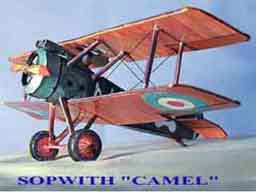 This model was built by Dave Caldwell, model builder and friend |
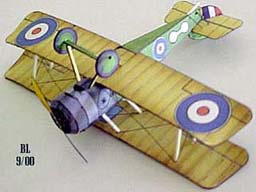 Model from the Barry Lank Collection. Thanks Barry! |
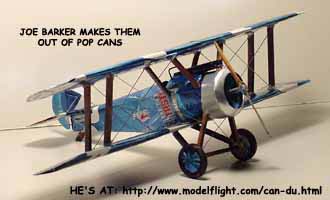 |
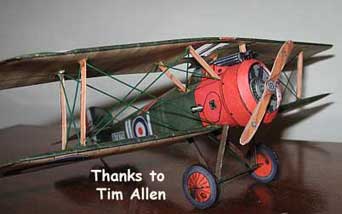 This Ray Brown model is included in the folder |
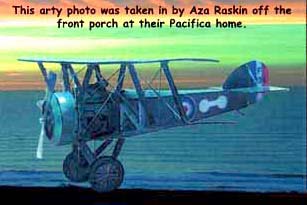 |
The USA purchased 143 Clerget-powered Camels in June 1918. These were later re-engined, detrimentally, with 150 hp Monosoupape's, and issued to four AEF squadrons. From August 1917 the. Le Rhone Camel was employed for Home Defense duties. All Camels so far discussed were F1 landplane fighters, but a shipboard version, the 2F1, underwent official trials in March 1917. Visually similar, it differed in construction from the Fl, with a l ft l in shorter span, and the starboard Vickers deleted for an upward-firing Lewis.
A total of 189 2F1 Camels were built, but did not become operational until spring 1918. Powerplant's remained the Clerget 9B or the BR1, and some 2F1s acted as dive bombers with two 501b bombs. By the end of the war 2F1 Camels had served aboard 5 aircraft carriers, 2 battleships and 26 cruisers of the RN. Discounting prototypes and cancelled contracts, 5,490 Camels were ordered, though delivery of all has not been established; and it is uncertain whether this figure includes the 2F1.
On 31 October 1918 the RAF had 2,548 Fis on charge, over half of them with Clerget engines, and 129 2F1s. The Camel was quickly replaced by the Snipe in postwar RAF service, but served with the Belgian Aviation Militaire, the CAF, the Royal Hellenic Naval Air Service, the Polish Air Force and the US Navy; two came on to the British civil register.
The USA purchased 143 Clerget-powered Camels in June 1918. These were later re-engine, detrimentally, with l50hp Monosoupape's, and issued to four AEF squadrons. From August 1917 the. be Rh8ne Camel was employed for Home Defense duties. All Camels so far discussed were F.l and plane fighters, but a shipboard version, the 2F1, underwent official trials in March 1917. Visually similar, it differed in construction from the F.1, with a 1 ft 1 in shorter span, and the starboard Vickers deleted for an upward-firing Lewis.
A total of 189 2F1 Camels were built, but did not become operational until spring 1918. Powerplant's remained the Clerget 9B or the ERI, and some 2F1s acted as dive bombers with two 50 lb bombs. By the end of the war 2F1 Camels had served aboard 5 aircraft carriers, 2 battleships and 26 cruisers of the RN. Discounting prototypes and cancelled contracts, 5,490 Camels were ordered, though delivery of all has not been established; and it is uncertain whether this figure includes the 2F1. 0n 31 October 1918 the RAF had 2.548 F1s on charge, over half of them with Clerget engines, and 129 2F1s. The Camel was quickly replaced by the Snipe in postwar RAF service, but served with the Belgian Aviation Militaire, the CAF, the Royal Hellenic Naval Air Service, the Polish Air Force and the US Navy; two came on to the British civil register.
Cole Palen and the Old Rhinebeck Aerodrome
By NORM PETERSEN
Portrait by David Webster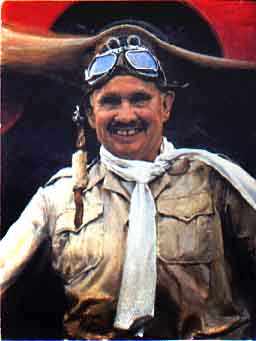
Approximately 100 miles north of New York City, not far from the west bank of the Hudson River, is a tiny airport with the unusual name of Old Rhinebeck Aerodrome. Although the name comes from the nearby town of Rhinebeck, NY, the ordinary name "Rhinebeck Airport," would be an injustice to the dedicated man who founded this particular airport and adorned it with the far more accurate name, Old Rhinebeck Aerodrome.
Shortly after he was born on a farm in Pennsylvania on December 28, 1925, James H. Palen, Jr. (Cole Palen) moved with his parents to Red Oak Mills, New York where his father engaged in poultry farming and his mother was a school teacher. The young lad spent many happy hours building model airplanes and dreaming of the day he would fly through the sky. The dreams merely intensified when Cole Palen made his very first airplane flight at the age of ten in a big New Standard "Bathtub" biplane that would hold four passengers at a time. Cole Palen never forgot the exuberant feeling of flight throughout his entire lifetime.
Following high school graduation in 1944, Cole Palen entered the U.S. Army and ended up in the heavy fighting during the Battle of the Bulge. Upon mustering out of service after the war, Cole enrolled in Roosevelt Mechanics School located at Roosevelt Field, Long Island, NY with the idea of becoming an airplane mechanic under the auspices of the 0.1. Bill. While at the school, Cole was highly intrigued by the old airplanes on display at the "Cradle of Aviation" from whence Lindbergh had taken off on his famous transatlantic solo flight in 1927. Little did he realize that one day he would own six of the nine aircraft on display: a Spad 15, 1914 Avro, Jenny JN-4, Standard J-1, Sopwith Snipe and an Aeromarine. The die was being cast.
Some three years after finishing his A & E license, Cole was nearly beside himself with excitement when he learned that Roosevelt Field was being closed down and the old aircraft collection was to be sold to the highest bidder. It was May of 1951 when Cole Palen bid his entire life savings (which was meager at best) for all of the remaining six air-craft - the Smithsonian had acquired three of them on a first choice basis. Much to his pleasant surprise, his bid was the highest and he was awarded all six aircraft. Now the fun began in earnest.
Cole had the really tough job of dismantling each airplane, loading the pieces on a (small) trailer and hauling each load through New York City and on up to his father's farm near Red Hook, NY, a distance of 100 miles! The task required nine round trips of 200 miles each with headaches and heartaches of every possible kind plus a complete lack of funds! Remember, he had spent everything to bid on the. airplanes. However, Cole Palen was a driven man on a mission and he was not about to give up because of adversity. The dream of a flying museum was foremost in his mind.
Always one to use his limited resources to the absolute maximum, Cole Palen spent his time rebuilding the old airplanes as best he could and always remaining on the lookout for additional parts and pieces to add to his meager collection. Remember that back in the mid-fifties, few people were interested in old airplanes and fewer still were interested in old parts and pieces! In retrospect, Cole Palen was about thirty years ahead of his time. Meanwhile, he was scouring the countryside to find a proper place to build his "dream airport" for actually flying the old time airplanes - still within his tiny budget.
The break came in 1958 when he discovered a small farm for sale along Stone Church Road, just north of Rhinebeck, NY. Apparently, the farmhouse had been the scene of a murder in years past and the locals considered the place "haunted." Cole could visualize a possible runway being laid out in an approximately north/south direction although much work would be necessary. In addition, the house was quite derelict, had no running water and no indoor plumbing (four rooms and path!). However, Cole felt he had struck gold when he purchased the farm for the equivalent of back taxes.
Now the really hard work began. The word began to circulate about this "upstart" of a person and his project of carving an airport out of a piece of rolling ground covered with rocks of all sizes. Almost like a magnet, aviation people in the area began to stop by and observe Cole Palen doing his thing. Many wanted to help. Volunteers began to arrive to help carry stones and rocks from the rolling runway. Some say there were "millions" of rocks to move, one at a time. It was a long, arduous task, but Cole Palen was at his very best, encouraging the volunteers, always doing more than his part and above all else, never complaining. These distinctive traits, so necessary to a person with his foresight, would see Cole Palen through the next thirty-five years. To people who had difficulty remembering his name, Cole would always tell them to think of "coal pail"! The analogy stuck.
Once there was enough grass on the short runway and enough trees were cut down on the ends of the runway to allow use of the short sod, the flying began. Nothing attracts more attention than the staccato bark of an old engine - especially if it's an old airplane engine and even more so if it isn't running well and has occasional "burps." People began drifting in to watch the action, usually on the weekends. It was a festive atmosphere because the flyers were actually having fun with the old airplanes. This was exactly as Cole Palen, a perennial optimist, had planned it.
Winters were spent rebuilding old airplanes, building new airplanes according to very old drawings, acquiring more "basket case" airplanes for eventual restoration and, when the weather allowed, new buildings were erected to house the growing collection. Funds were tight as usual and many meals consisted of peanut butter sandwiches and milk; however, the jobs were completed regardless. Cole Palen never wavered in his dream of a flying museum so aptly named - Old Rhinebeck Aerodrome.
Weekend on-the-spot flight demonstrations during the early sixties evolved into once a month air shows for the gathered spectators and eventually, an air show was presented every weekend from June 15 to October 15. Over the next thirty plus years, thousands of people would flock to the small airfield in the woods. In the early days, Cole Palen would become chagrined at the many folks who would line the road along the runway and watch the activity for free. Before long, the woods grew thick and green and the road visibility completely disappeared! The Cole Palen magic had worked again. Pioneer airplane rides, World War I mock dogfights and barnstorming acts would make up each show. As Cole Palen had said many times, he was always trying to portray some of the fun and excitement of early aviation and everything at the Aerodrome, in some small way, showed this.
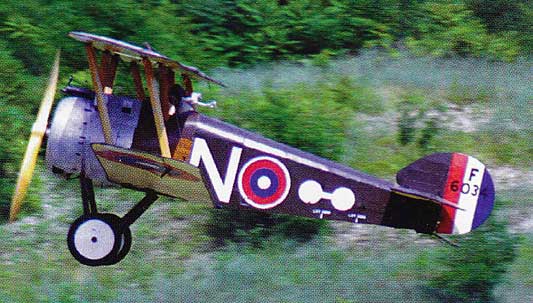 In
1967, Cole Palen became EAA member 39712 and a bit later became
a member of the Antique/Classic Division as number 3044. One of
his close friends over the many years was the late Gordon Bainbridge
who authored a book entitled "The Old Rhinebeck Aerodrome"
which was published by Exposition Press, Hicksville, NY, in 1977.
This book is a delightful array of aeronautica that explains Cole
Palen to the core. And it is written from the heart. If you want
to know what makes a man like Cole Palen tick, this is the book
for you. Gordon Bainbridge passed away on October 31, 1993 at
Rhinebeck, NY.
In
1967, Cole Palen became EAA member 39712 and a bit later became
a member of the Antique/Classic Division as number 3044. One of
his close friends over the many years was the late Gordon Bainbridge
who authored a book entitled "The Old Rhinebeck Aerodrome"
which was published by Exposition Press, Hicksville, NY, in 1977.
This book is a delightful array of aeronautica that explains Cole
Palen to the core. And it is written from the heart. If you want
to know what makes a man like Cole Palen tick, this is the book
for you. Gordon Bainbridge passed away on October 31, 1993 at
Rhinebeck, NY.
Ev Cassagneres of Cheshire, CT, has been a compatriot of Cole Palen's from the very early days and writes this endearing story about Cole Palen. "I recall one night when it was raining rather hard and we drove along this dark and lonely road. Cole's headlights showed up some kind of animal in the middle of the road that had been hit by a car and was just lying there staring at us. Cole stopped the car, we both got out and went to the animal's side. It was completely Cole's idea to do something, even though I have always loved animals and nature. He very, and I mean VERY, gently and with a board, picked up the animal (I think it was a possum or a beaver) and carefully moved the poor thing way into the woods out of sight of people. He then remarked, 'Animals and nature have a wonderful way of healing themselves and should be given a chance to survive like us.' I never forgot this, Cole the giver, a man with a lot of love and respect for life, his fellow man and laughter."
As the collection of old time air-planes grew at Old Rhinebeck Aerodrome, Cole Palen branched out to include old motorcycles (some with sidecar), old cars, ancient trucks, ancient ambulances and even a huge army Renault tank. Many of these offbeat vehicles are used in the weekend shows in various capacities to add color to the presentation. The crowds love them. Can you imagine a rather nice car parked near the end of the runway with the announcer asking the owner to please move it? The plea is repeated several times by the announcer - all to no avail. Suddenly, the army tank is driven down the line in front of the crowd and is run right over the parked car - crushing it to scrap metal! Only later does the crowd learn it was a put up job, but it surely keeps the car parking in line!
Cole Palen, who has been described as a modern day Rickenbacker, Doolittle, Lufberry, Lindbergh, Acosta and Papana all rolled into one with all the talents, daring, adventure, skill and cleverness necessary to develop and run such an operation, passed away in Florida on December 8, 1993.
During the spring and summer of 1993, Cole Palen and his wife of many years, Rita, founded The Old Rhinebeck Aerodrome Museum Foundation. The purpose was to perpetuate the Aerodrome's historical significance in the annals of aviation as well as keep it located on the property of its inception.
Cole had worked tirelessly all summer to construct a new and long lasting 70' X 120' all-metal building within which to house the most significant of his collection of aircraft. This collection had actually grown from the original six aircraft he purchased in the mid-fifties to more than sixty-five housed on the Aerodrome today, including his most recent acquisition, a Fokker Eindecker that he was in the process of restoring at the time of his death.
This model, in post card format, is unique because of of the 1996 dedication to Old Rhinebeck Aerodrome's founder, Cole Palen following his passing in 1993. Word to the wise if you're collecting: Save one! Omaka Aerodrome, in Blenheim, New Zealand is rapidly becoming THE site to see airworthy (and flying) World War One aircraft in the Southern Hemisphere. Already based at the aerodrome are airworthy examples of the Sopwith Camel, Fokker DR-1, Bristol Fighter F2B. Also, already located on the field, a Pfalz D-III and Siemens-Schuckert D-IV are in the final stages of restorative maintenance to airworthy condition, and this is expected to be completed before the end of 2002.
This Camel version, included in the folder, is in the colors of Clive Collett, a Blenheim-born pilot who flew the type during WW1. Credited with 12 victories, Collett was killed in December 1917, while test flying a captured Albatross in Scotland. See the web site at http://www.classicfighters.co.nz for information about Blenheim, the aircraft, and the biennial Classic Fighters Airshow held at the aerodrome.
Perhaps it's greatest claim to fame was its downing of the famous Red Baron by Sopwith Camel pilot Roy Brown on April 21, 1918. Or was he done in by ground fire by the Aussies??
About Roy Brown....
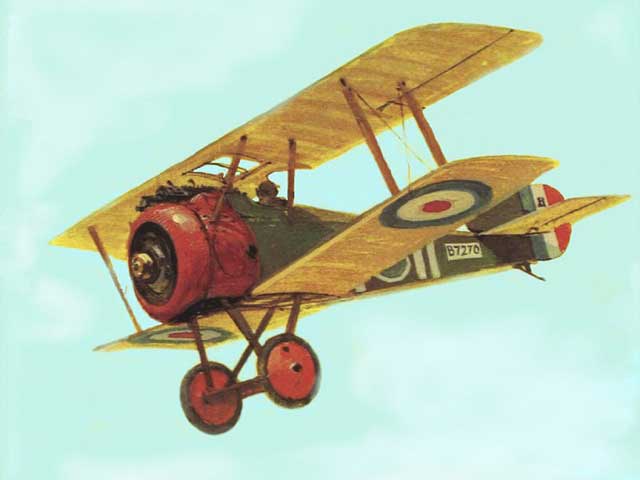 Roy Brown became captain of the 209 Squadron of the Royal Air Force (RAF) in the spring of 1918. His school friend "Wop" May, a relatively inexperienced pilot, was assigned to Brown’s squadron. At the same time, Rittmeister Manfred von Richthofen, known as the Red Baron, and his young cousin Wolfram, were flying in Germany’s Jasta 11 Squadron.
Roy Brown became captain of the 209 Squadron of the Royal Air Force (RAF) in the spring of 1918. His school friend "Wop" May, a relatively inexperienced pilot, was assigned to Brown’s squadron. At the same time, Rittmeister Manfred von Richthofen, known as the Red Baron, and his young cousin Wolfram, were flying in Germany’s Jasta 11 Squadron.
At the end of March 1918 the Germans had launched a massive offensive in France and Belgium. To support this offensive, Germans Jagdgeschwader 1 with Fokker Dr.1 Triplanes and Albatrosses, was posted to a forward little airfield in Cappy (more a large muddy meadow) along the river the Somme.
The morning of April 21 the Somme valley was covered with thick mist. There was no activity of air forces of either side. The German Jasta 11 lead by Hauptman Rittmeister Manfred von Richthofen, was waiting in Cappy, about 8 kilometers south of Bertangles, until the mist cleared. At about 9.45 am the visibility was still very poor but the flying circus with the Fokker DR1's took off to patrol over the front. Besides the Red Baron himself, one of the triplane pilots was a young Herman Goering.
As the mist cleared further a flight Camels was taking off at 10.00 from Bertangles air base. Commander Brown in his red nosed Camel and Wop May were two of the pilots. The Germans lost an airplane in a dogfight with a couple of Australian RE8s, The Australians escaped, while the Germans went on their way. Also the 209 flight of Brown had contact with an enemy scouting group and it came to a chase, but due of the mist both escaped each other.
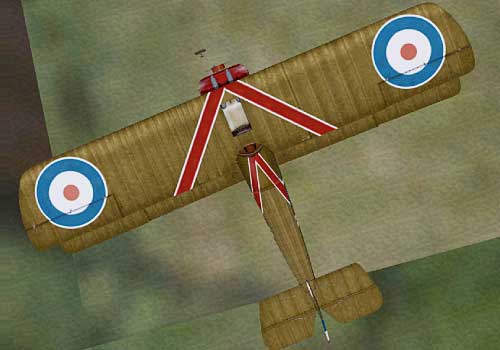 Both sides reformed and headed towards each other. The RAF 209 Camels met Jasta 11 Fokkers. Brown wanted Wop May, being a rookie, to keep out and waved him to stay high above and watch the dogfight and learn from it. The triplanes and the Camels tumbled and rolled around each other, then attacking and then defending. May watched from above until two Fokkers passed under him. He could not stay out any longer and dove to attack but was happy to survive this first battle. With a jammed machine gun May had to leave and headed for Allied lines. The Red Baron saw May leaving the group and followed him. When Von Richthofen fired some shots into the camel May realized for the first time that he was under attack. When he looked back he saw the red painted triplane and was urging to land on safe ground. Von Richthofen stayed at his tail.
Both sides reformed and headed towards each other. The RAF 209 Camels met Jasta 11 Fokkers. Brown wanted Wop May, being a rookie, to keep out and waved him to stay high above and watch the dogfight and learn from it. The triplanes and the Camels tumbled and rolled around each other, then attacking and then defending. May watched from above until two Fokkers passed under him. He could not stay out any longer and dove to attack but was happy to survive this first battle. With a jammed machine gun May had to leave and headed for Allied lines. The Red Baron saw May leaving the group and followed him. When Von Richthofen fired some shots into the camel May realized for the first time that he was under attack. When he looked back he saw the red painted triplane and was urging to land on safe ground. Von Richthofen stayed at his tail.
Brown saw that May had a lot of problems to save his back and went behind the two, shooting at the red Fokker, missed but had the attention of the Red Baron. This gave May time to get out of trouble.
Brown maneuvered in a position behind von Richthofen and fired continuous at the Fokker. Suddenly the triplane lost velocity and when Brown passed him he saw the Red Baron sitting upright and not actually flying a plane. The Fokker was gliding above the country until it lost all power and dove into the allied ground not far from gun-firing Australian troops.
The Red Baron, Manfred von Richthofen was sitting dead in his red Fokker DR.1 wreckage. Nobody actually was sure who really had killed von Richthofen, but nowadays the credits go to the Aussies. Billy Bishop later said the following, "Brown was an excellent flier, an experienced fighter pilot and was on the tail of von Richthofen firing at him just before he crashed. Von Richthofen came over the Australian machine gun position several hundred feet up at a high speed, was over their position for only a few seconds and they had to fire up at him. So who is the most likely to have killed von Richthofen?"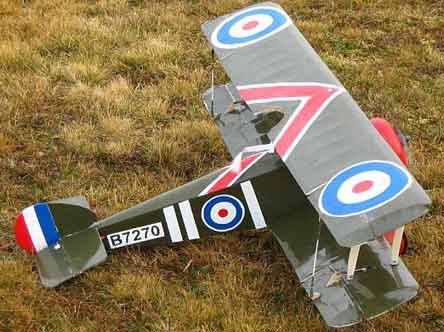
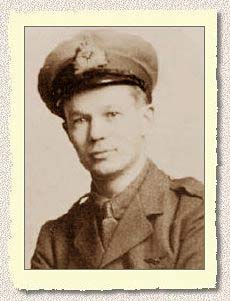 Nine days later Brown was admitted to hospital with influenza and a nervous breakdown. He was discharged in June and was appointed to No. 2 School of Aerial Fighting as an instructor. He again was involved in a serious air accident. On July 5 he fainted in the air and crashed, badly fracturing his skull, neck and back. He spent another five months in hospital, but it was another five years before he fully recovered.
Nine days later Brown was admitted to hospital with influenza and a nervous breakdown. He was discharged in June and was appointed to No. 2 School of Aerial Fighting as an instructor. He again was involved in a serious air accident. On July 5 he fainted in the air and crashed, badly fracturing his skull, neck and back. He spent another five months in hospital, but it was another five years before he fully recovered.
After the war Brown retired from the RAF and went back to Canada. Live the civilian life, tried several jobs and finally operated a small airline in Quebec and Ontario. This failed in 1939.
When World War 2 started he tried to join the RCAF but was rejected. His last job was as Advisory Editor to Canadian Aviation magazine.
He died of a heart attack at age 50, in Stouffville, Ontario, 9 March 1944. Brown was given a bar to add to his Distinguished Service Cross for the victory over the Red Baron.
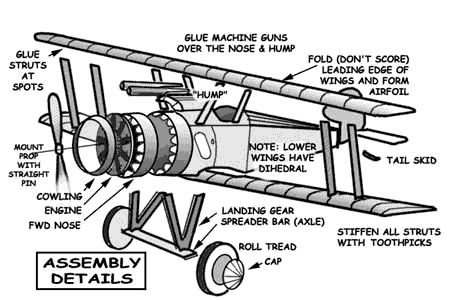
Specifications for the Sopwith Camel
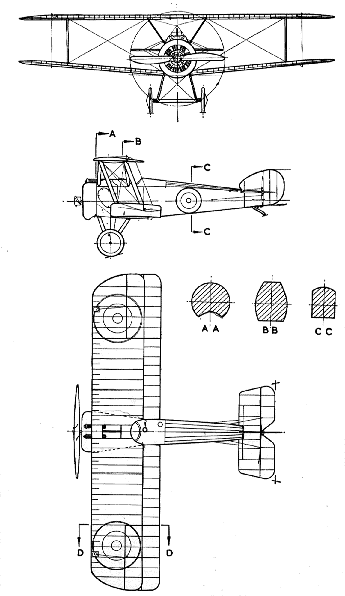 |
Length: 18 ft 9 in Wingspan: 26 ft 11 in Height: 8 ft 6 in Wing area: 231 ft² Empty weight: 930 lb Loaded weight: 1,455 lb Powerplant: 1× Clerget 9B 9-cylinder Rotary engine, 130 hp Zero-lift drag coefficient: 0.0378 Drag area: 8.73 ft² Aspect ratio: 4.11 Performance Maximum speed: 115 mph Stall speed: 48 mph Range: 300 mi ferry Service ceiling: 21,000 ft Rate of climb: 1,085 ft/min Wing loading: 6.3 lb/ft² Power/mass: 0.09 hp/lb Lift-to-drag ratio: 7.7 Armament Guns: 2× 0.303 in (7.7 mm) Vickers machine guns |
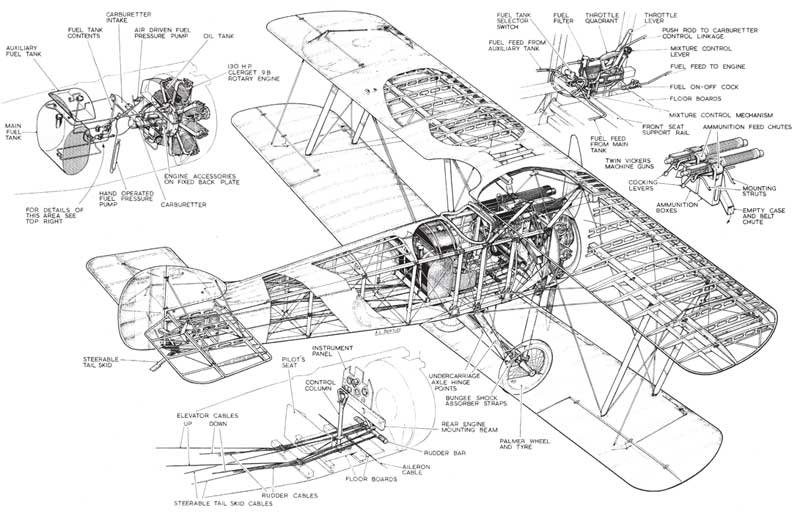
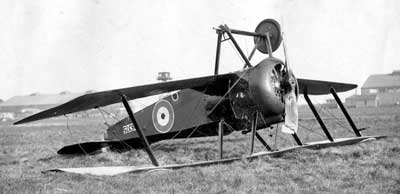 |
| Flight Sub Lieutenant Williams had this unfortunate incident on the 8th March 1918 in Sopwith Camel no. N6375. This incident ended this particular aircraft's useful life when it was landed on one wheel at the Isle of Grain. |


